|
Baseball season has just wrapped up with the Washington Nationals beating the Houston Astros to win their first World Series title ever. It reminds me of a baseball game played here in Perry back in 1922.
In October of 1922, Babe Ruth and a less popular but still very successful player in his own right, Bob Meusel, came to town to play an exhibition game. There was a lot of hype and excitement, as you can imagine, leading up to the event. The Perry branch of the American Legion had organized the event and hoped to make a tidy sum of cash off of ticket sales. Unfortunately, the day ended up being cold and dreary, and even though the rain mostly stopped an hour or so before the game began, the attendance was much lower than hoped. Ruth and Meusel ended up taking most of the profits home with them. I guess that’s what happens when you play a baseball game on Friday the 13th. The game was against Pella, and Meusel played for them while Ruth played for Perry. Meusel hit a homerun and Babe hit a couple of triples. You’d think “The Sultan of Swat” could have managed at least one homer, but apparently the outfield wasn’t enclosed by a fence, which enabled the outfielder to get to the ball and throw it back in before the lumbering Ruth could get past third base. I hadn’t realized until recently that the Ku Klux Klan was very active in Perry around that same time. I also didn’t know that the KKK was extremely anti-Catholic. Babe Ruth was Catholic and is said to have even visited St. Patrick’s School while in town. You would think given the fact that, according to a The Perry News article, a KKK grand master lived in town, there would have been protests and maybe even a cross burning. In reality, Babe Ruth coming to town was such a big deal that KKK members decided to forgo their prejudice for the day and instead sat in the stands and cheered for him and the hometeam along with everyone else. I guess that’s what happens when you play a baseball game in Perry. God bless America.
0 Comments
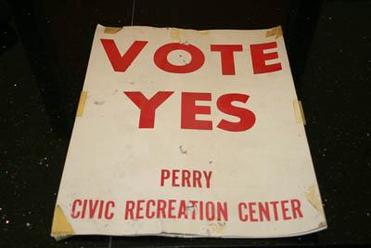 Hello Readers and welcome back to the Hometown Heritage blog! The McCreary Community Building is Perry’s place to be for swimming, exercising, and more. But did you know that it wasn’t always the place to be? In fact, it appears that there was a chance it might not even have been constructed! As you can see in the picture, here in our collection we have a sign that reads, “Vote yes Perry Civic Recreation Center”. As we know now, the vote passed, but at the time, it looks like the decision was not easy! There must have been some people in Perry who did not like the idea of building a new Civic Recreation Center. Maybe they did not want to pay a new tax that was going to be implemented in order to build a new building? Perhaps someone thought that what Perry had already was good enough? In any case, someone felt the need to convince people in Perry that a new Recreation center was something Perry needed. Unfortunately, we do not know the date for this sign, so it might pre-date the McCreary Center by many years. If you remember seeing a sign like this, please let us know when! We are always looking to add more information to improve our collection. Also, some of you may be wondering what was in Perry before the McCreary Center. If you are, come back next week and find out! Hello and Welcome back to the Hometown Heritage Blog!
September is almost upon us and with it a new group of events for the Gary Ernest Smith Exhibition! I thought I would take this time to let you all know what and when September’s events are, if you have not seen them already! The first event this month is tomorrow, September 1. This is the first in a series of events we are calling “Art Tour Odd Numbered Thursdays” (or Art Tour Odd # Thursdays, ATO#T for short). This time, the tour will be introductory tours. Similar to the Opening Reception, this Art Tour Odd # Thursday will feature simple tours given every half hour of the art that we have on display. It starts at 4:30 P.M. at the Hotel Pattee, and goes until 6:30 P.M. The next event we have this month is Creative Mornings, another series of events that will continue throughout the Exhibition. This Creative morning will happen on September 6, from 10:00 to 11:30 A.M. at the Hotel Pattee. This event features both art and coffee, and will be hosted by Betsy Peterson and Carolyn Guay. The next event after this is another Art Tour Odd # Thursday on September 15, from 4:30 to 6:30 P.M. at the Hotel Pattee. This tour will be different from the first, as it will be a tour led by Bill Clark, the Hometown Heritage Board President and local businessman. It will feature looking at the art from a businessman perspective. The fourth event in September is the big event that should get everyone excited. On September 22, Gary Ernest Smith himself will be here! Starting at 7:30 at the Hotel Pattee he will be leading an Art Walk! This is a great time to learn about the art on display directly from the artist himself. Prior to the Art Walk, Pam Jenkins Phd, a Research Professor of Sociology (Emerita), at the University of New Orleans and a Permanent Trustee of Hometown Heritage will be giving a presentation entitled “Growing Up in a Small Town and the Art of Gary Ernest Smith” at 6:30 P.M. at the Hotel Pattee. We encourage you to come to both and experience a great night of Art and learning! The next day, September 23, Gary Ernest Smith will be in Ames at the Brunnier Art Museum for a reception there. For anyone who wants to go that night, we will have a bus available to take people there and back at 5:30 P.M. from the Hotel Pattee. The cost is $20 per person and seats are first come first serve. Finally, we will hold another Art Tour Odd # Thursday on September 29, from 4:30 to 6:30 P.M. at the Hotel Pattee. This tour will be led by host Rachel Schwaller, Associate Professor of Art & Design at Grandview University in Des Moines, Iowa. We encourage you all to come to as many of these events as you can, as each tour will be different. Do not forget either that the more events you come to (and get the back page of our printed schedule signed) the greater your chance of winning the Perry Area Gift Basket at the end of the Exhibition! I hope to see you all at these events in the future! Hello and welcome back to the blog readers!
Today I want to let you all know that the Gary Ernest Smith Exhibition opens next week! Here at Hometown Heritage we have been hard at work setting up all the paintings and planning the events that we will hold during the exhibition. In fact, our first event is coming up next week, coinciding with the official opening! Next week, on August 23, we will be holding an Opening Reception for the Exhibit. The event will take place at the Hotel Pattee, starting at 4:30 P.M. It lasts until 6:30. Some of you may be worried that you will miss the event, since it starts at 4:30, but do not worry! You can come at any time and will not miss anything. The night will be an introduction to the Exhibit, with introductory tours of the art throughout the night. There will also be a second round of introductory tours on Thursday, September 1st at the same time and place. We will also be selling books about Gary Ernest Smith at this and future events for $15. These books are centered on the Gary Ernest Smith’s life and art. Limited amounts of copies are available, so get one while you can! I encourage you all to come and take in the works of Gary Ernest Smith! For more information about other events during the Exhibit, follow us on Facebook and check back, as updates will be posted regularly. For a complete schedule of events and downloadable .jpg, click here. I hope to see you all at the event on August 23! Hello and welcome back to the blog readers!
Many of you readers have probably seen the new giant white towers that have gone up outside Perry recently. These Wind Generators were built to generate electricity using wind, but they are not a new concept; people have been building and using windmills to harness the wind for centuries. Modern windmills are erected using cranes and other machines, but have you ever wondered how windmills were raised in the past? Fortunately, here at Hometown Heritage we have a couple of pictures that show the raising of a windmill, so your curiosity can be fulfilled! Below, you can see the raising a windmill on the Read farm around 1920. Raising this kind of windmill took many workers. Similar to raising a barn, the windmill seems to have been constructed on its side, and then pulled up into position with the workers pulling on the ropes. Curiously, in the picture there appears to be ropes on either side of the windmill, not just on the side being raised. Perhaps the other ropes were used to keep it steady while going up, or maybe would be used as anchors once the windmill was up? Another curiosity is the wooden structure on the left side of each picture. It appears to be some kind of big “X”, with the ropes running through the top. What is curious about this is not its purpose, as it most likely was used to create the leverage needed to raise the windmill. What makes it curious is why this method is employed instead of a pulley system, or something similar. Do any of you readers know why this big wooden x was used? If so, please let us know in the comments! Readers, do not forget that the Gary Ernest Smith Art Exhibition is starting soon! The opening reception here in Perry is on August 23, from 4:30 to 6:30 P.M. You can find the link to the event on Facebook by clicking here. Feel free to invite people you know to come see the paintings of Gary Ernest Smith! 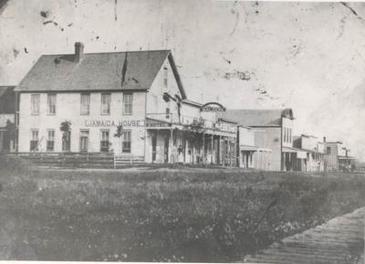 Hello readers and welcome back to the Hometown Heritage Blog! I have a question for you to ponder, readers. Do you think that you could uproot yourself and your family, move to a new town, and open a new business to try to stay alive? Would you be able to leave your old life behind? I ask because this is exactly what Jacob Heater Jr. did in the year 1887. The year was 1887, and the country was in a serious depression after the high of the Civil War. Dubbed the “Gilded Age”, the time was characterized by a materialistic excess and extreme poverty. The term "gilded" referred to the idea that although on the surface everything seemed fine, like it was made of gold, this gold was just a thin coating that covered a life that was hard and unforgiving. Jacob and his wife Martha were trying to make a living on his farm, but were not succeeding. In an attempt to try to make enough money to survive, Jacob Heater Jr. uprooted his whole family and moved to Jamaica, Iowa. Many of you may be asking why, and the answer is that he attempted to start a Hotel. Named the Heater House Hotel, it was a building directly across from the Railroad Depot on the Southwest corner of Main Street in Jamaica. As you can see in the picture, it was a two-story building with a very big porch and balcony. The reason for this is that the Hotel shared its balcony with a saloon next door. In theory, this is a very promising partnership. The two buildings, located directly across from the Depot, would be able to draw in travelers for drinks at the saloon, then send them to the hotel when they needed a place to stay. Unfortunately, since times were so bad, the Heater House Hotel went broke after a few years. Jacob’s fate after his hotel is unknown, but hopefully he found another way to live! Readers, do you think you could do what Jacob did during a depression? Tell us in the comments! As a final note, we are drawing closer to the opening of the Gary Ernest Smith Exhibition! Remember to save August 23rd to your calendar as the opening reception here in Perry at the Hotel Pattee from 4:30 to 6:30 P.M. I hope to see you there! 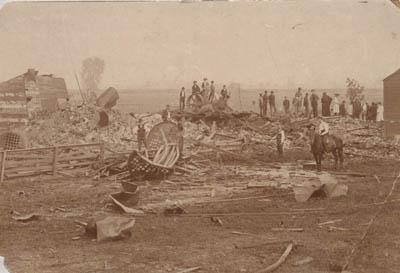 Hello Readers, and welcome back to the blog! Perry has undergone many changes over the years, some quite a bit more drastic than others. For example, did you know that there used to be a different Light and Water plant in Perry? The old Light and Water Plant was a very interesting building. First, the building is not something that we see in America today, as we separate the water works and light works into separate buildings. However, what makes the old building so interesting is what happened to the building in July 1894 and to Henry Draper. Henry Draper was the Night Operator of the Light and Water Plant, and he was on his way to work on that fateful night in July. Little did he know, Henry was never going to do any work that night. As he was on his way to work, the Plant exploded. The cause of the explosion is unknown, but as you can see in the picture, the plant was flattened. Henry was unharmed, but unfortunately the Superintendent Henry Hock was killed in the explosion. It is a very curious case, and there is no information about the explosion in our collection other than the fact that it occurred. If you know anything else about the explosion, please share with us below in the comments! As a small side story, I will tell you what happened to Henry Draper after the explosion. He became a landscaper and sexton at the Violet Hill Cemetery. He did his job exceptionally well, to the point that when the plans for the cemetery were destroyed for a time, he was the only man to know where the more than 900 dead were buried! See you all next Wednesday! 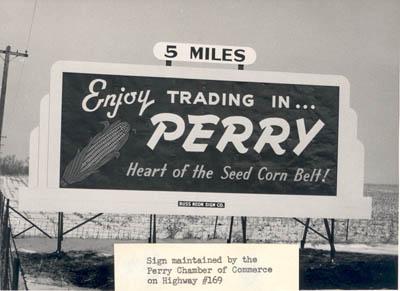 Good Afternoon Readers! Many of you have probably seen the welcome sign on the highway into Perry, but did you know that there used to be another sign directing people to Perry? It was a sign that was five miles out on Highway 169, and was very intriguing! As you can see in the picture, the sign was similar to a billboard and directed people to Perry to trade. The sign existed around 1950, and was maintained by the Chamber of Commerce. It featured a large ear of corn, which leads me to a big question that intrigues me. It calls Perry the “Heart of the Seed Corn Belt”. Personally, I have never heard of the Seed Corn Belt. It sounds similar to the Bible Belt in the South, but I have no idea what it truly means! Is it just a reference to all the corn grown in the Midwest, or is it something else? If any of you know more about it, I encourage you to tell us in the comments below! As a final word, I want to let you all know that we now have postcards for the Gary Ernest Smith Exhibition! You can find them at business around town, such as Ben Franklin’s or the Perry Perk. Or, come visit us in the Lower Level of the Town Craft Building to not only get a postcard, but see some of our wonderful collection for yourself! Good afternoon Readers!
Summer is in full swing, and July 4th is quickly approaching. Because of this, I thought that today we would look at what the holiday was like in Perry in years past! For instance, the parade seems like it used to be much more ornate than what we have now. As you may know, now the parade is mostly a collection of floats, with a people walking around handing out candy to the kids. However, did you know that the Perry High School Marching Band used to participate in the parade? As you can see in the picture, the parade in 1969 included the old Perry High Band. This is quite a bit different then what it is like today. For starters, the uniforms are a lot different: simple black and white instead of the more elaborate blue and white uniforms of today. In addition, the band does not march in the parade anymore. As far as I know, they do not even start practicing until for marching band until August! Going back another ten years, we discover another event that is missing from today’s 4th of July celebrations. In the second picture, you can see a group of girls who are in a room in the Hotel Pattee. These girls are the candidates, according to our records, for a 4th of July queen! It seems that the residents of Perry used to vote for a queen for the 4th and, I am assuming, a king as well. The girls in this photo are, starting from the left, Judy Hastie, Sheri Mullen, Phyllis Hall, Joyce Neal, and Bonnie Crouch. This fun tradition does not seem to be active anymore, and it makes me wonder why. Did the people of Perry simply stop choosing candidates? Or was the tradition ended for a specific reason? Readers, do you know what happened to this tradition? If you do, please tell us in the comments below! In fact, if you have any memories of some lost 4th of July tradition, please share them with us, too, and have a good 4th of July weekend! Good Afternoon Readers!
Today I have another interesting story from out of our collection of Oral Histories. This story is about a darker time in Perry and America’s history: segregation. This story comes from the Oral History of Glen Theulen. It is about a high school dance that he attended and danced with an African American classmate, and the reactions of people at the dance: “When I was in high school…I was a junior…we had a dance up on the old gym floor up here…the old high school. And the whites were not to dance with a black girl, never and vice versa. And so… So anyway why the…the dance goes on and so I went over and I said to Sophia White, I says come on Sophia let’s dance. Oh we can’t. I said come on, come on, let’s dance. And Sophia White is the sister to Roy White. Okay. Sophia was a year ahead of me…brilliant girl…and man we got on that floor and jitterbugged and I thought every teacher in that gymnasium was gonna have a heart attack and I’d forgotten about that but Kenny Appenzeller, kid from Perry…farmed outside of town here… When I first got home here in ’89 said you remember the night that you got old…got the…Sophia White on the floor? He says I thought the teacher was gonna have [unclear]. I thought she was gonna…and I said well I kinda remember that, yeah. And you know I just never…” Unfortunately, we do not know what Kenny thought the teacher was going to have, as the translator for the script could not make out the words being said. However, as you can see, segregation was a real thing here in Perry. Even dancing together was not allowed, and from the sounds of it almost gave all the teachers heart attacks! Clearly, dancing with Sophie was completely unexpected, even if their jitterbugging was amazing. It is such a shame that a simple act of dancing with another person could lead to such awful words and hate. Thankfully, segregation no longer exists in our country today, and we have come a long way on discrimination. Do you, readers, have any stories about segregation? If you do, please feel free to share them with us! |
Archives
March 2020
Categories
All
|
All Rights Reserved, Fullhart Carnegie Charitable Trust, 2014-2023
This website is possible with the support of the
Dallas County Foundation
This website is possible with the support of the
Dallas County Foundation

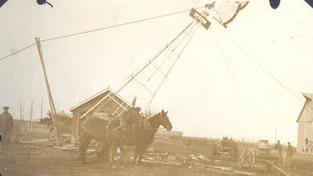
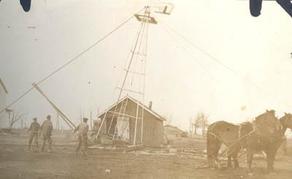
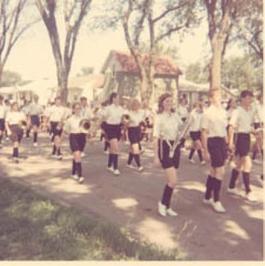
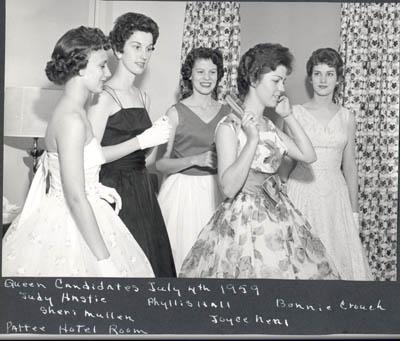
 RSS Feed
RSS Feed